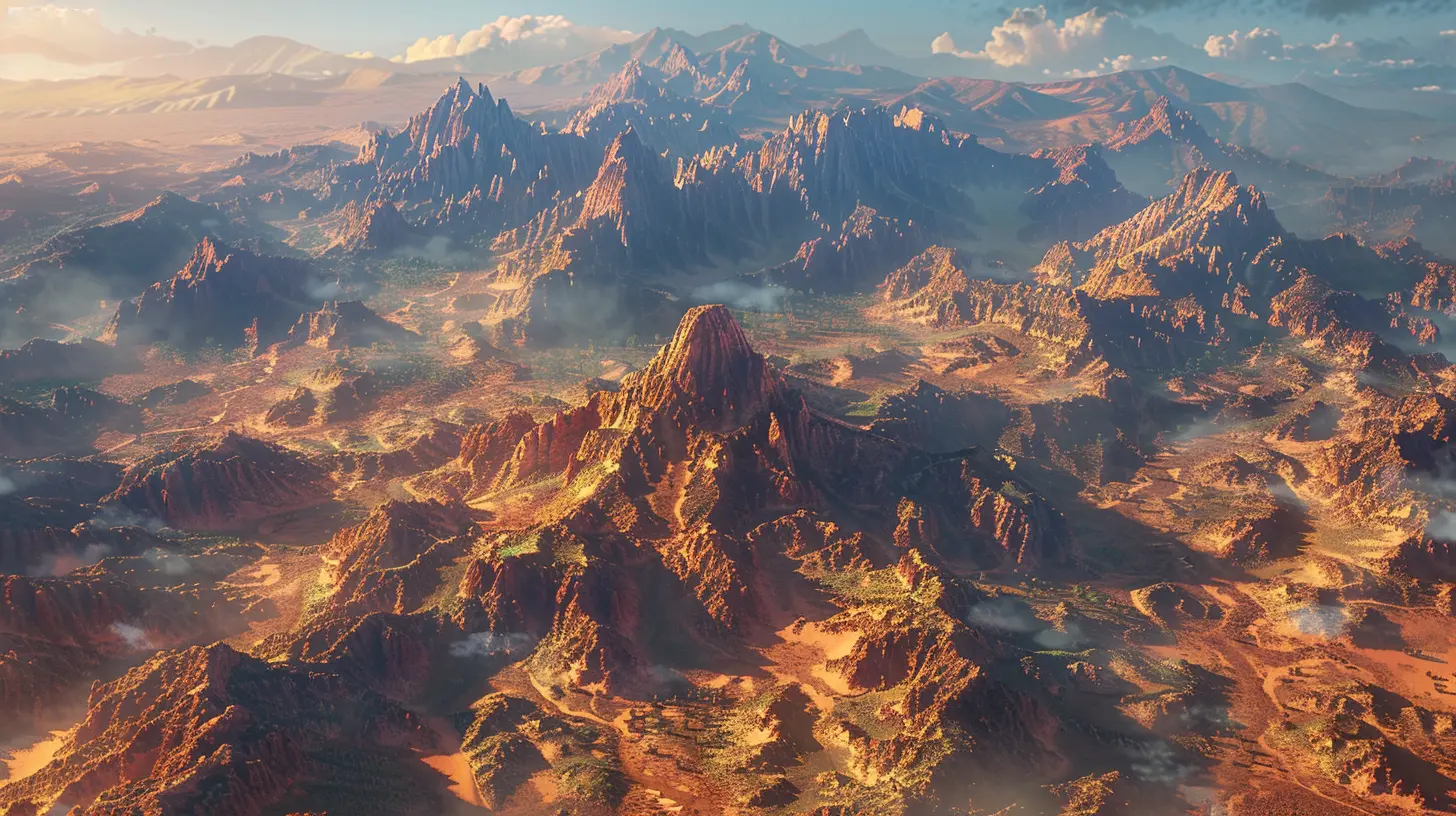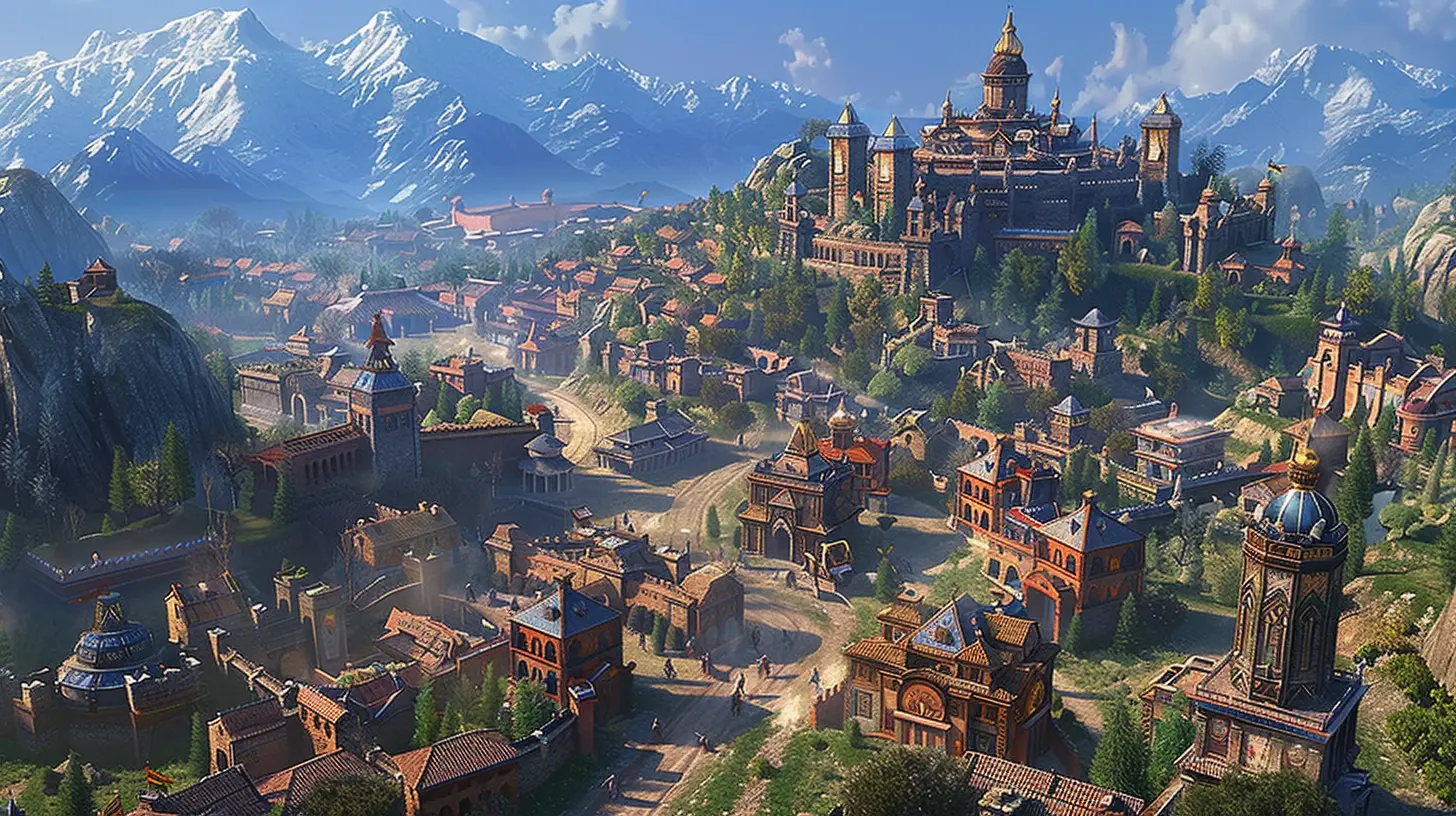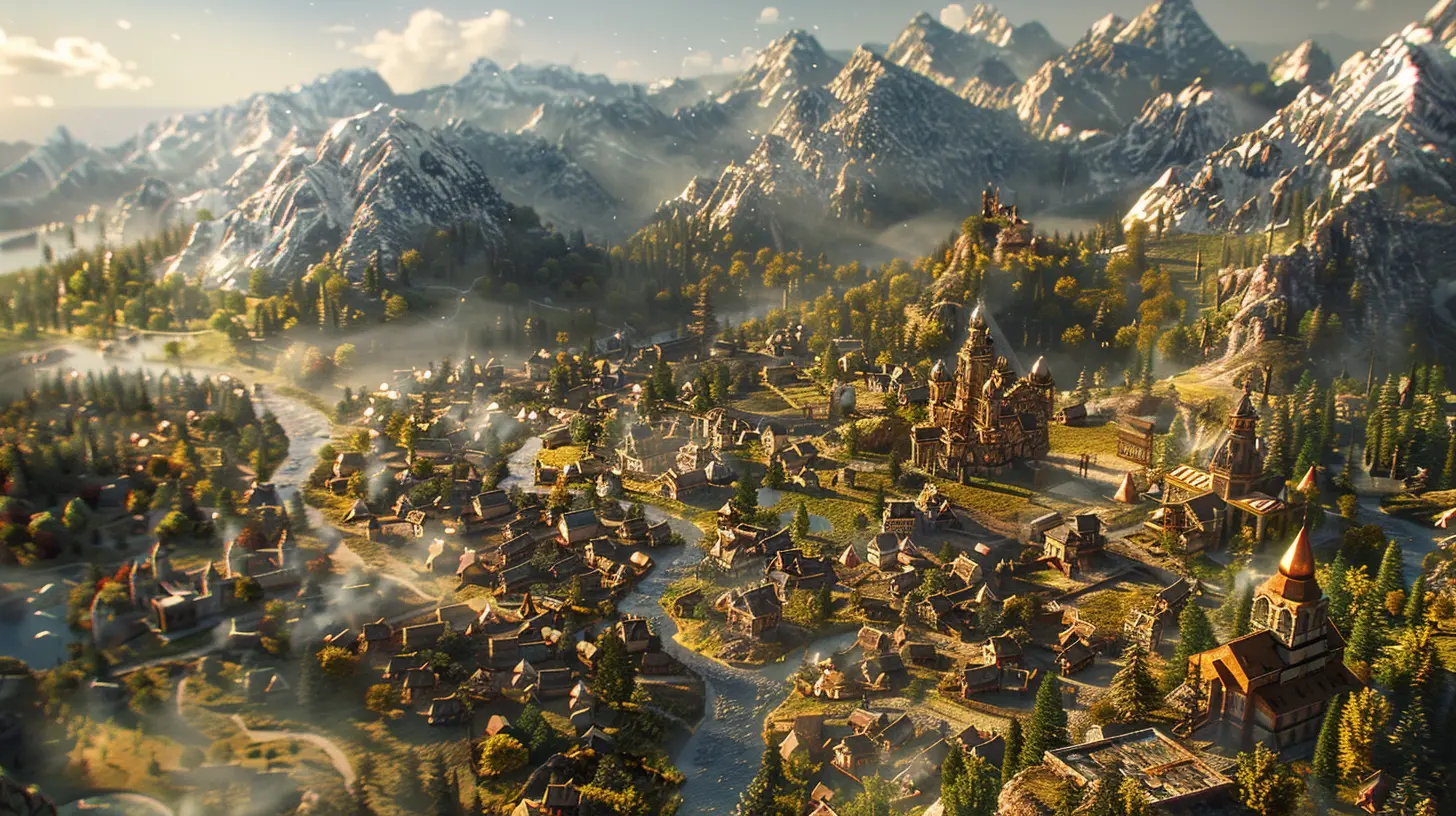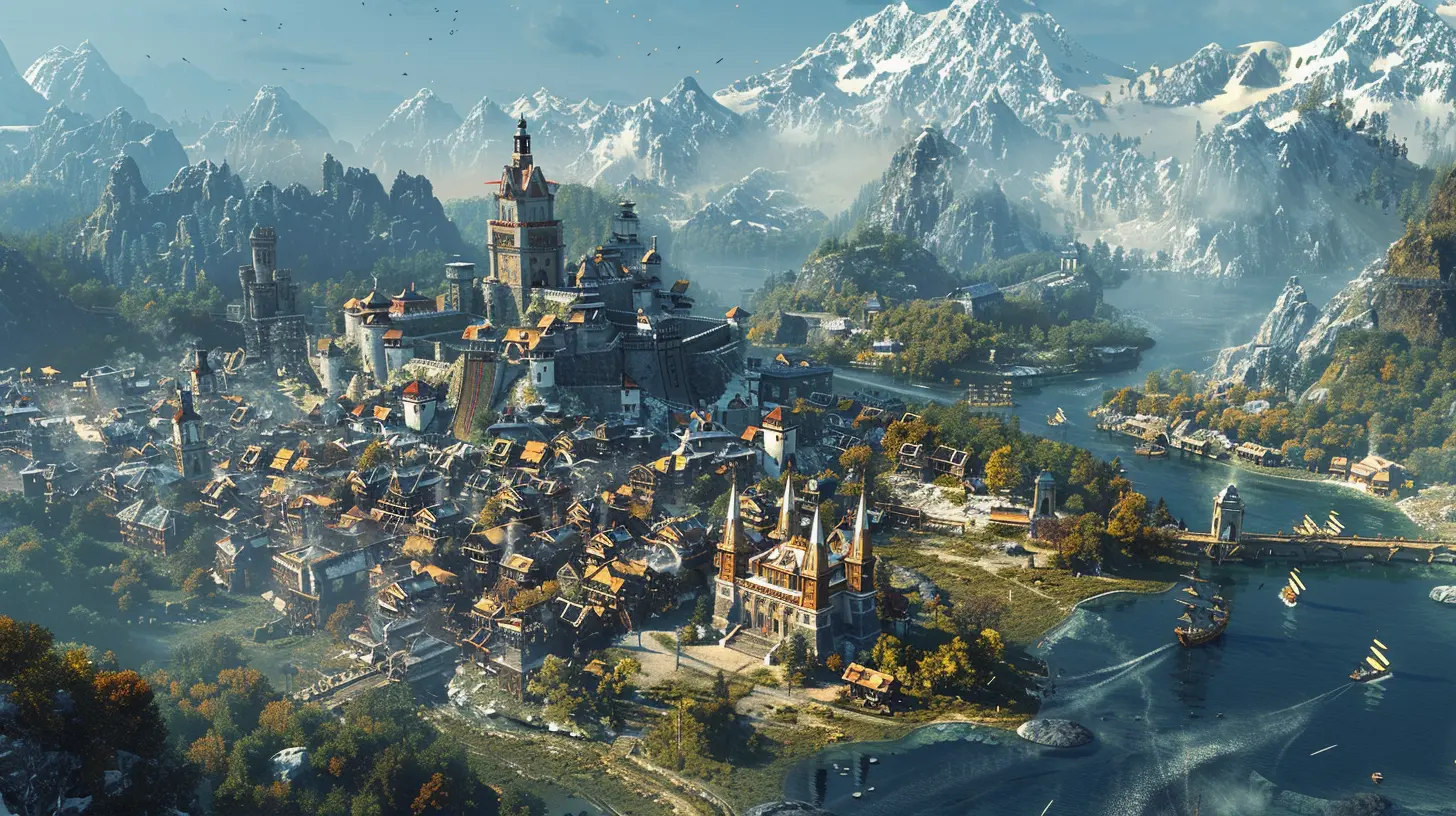The Strategic Importance of Terrain in Real-Time and Turn-Based Games
30 June 2025
When you're diving into the world of strategy games, whether it's a heart-pounding real-time skirmish or a carefully plotted turn-based game, one thing often stands out: terrain. It's not just some pretty backdrop or filler to make the map look cool. Oh no, terrain can be your best friend—or your worst nightmare. Let's be real, how many times have you underestimated a chokepoint or ignored a hill, only to watch your troops get obliterated? If you've played games like Civilization, StarCraft, or XCOM, you already know that terrain can make or break your strategy.
So, buckle up. We're about to dig into why terrain is so dang important in these types of games, how developers use it to keep things engaging, and some tips to use it to your advantage. Because honestly? Ignoring terrain is like playing chess without paying attention to where the pieces actually are. Let's not do that.
Why Terrain Defines Strategy Games
Think of terrain in strategy games as the silent player on the board—it doesn't move, it doesn't attack, but it still has a huge impact on the outcome. The entire concept of strategy games, whether real-time or turn-based, revolves around smart planning and execution. And the terrain? It's one of the key pieces in that puzzle.In real-time strategy (RTS) games like Warcraft III, terrain can dictate where you can safely move your units, where you set up ambushes, and even where you build your base. On the flip side, in turn-based games like Fire Emblem or Advance Wars, terrain turns each move into a chess-like decision. Move to the high ground? Seek cover behind some trees? Each choice matters.
But why is terrain so important? It's simple: it forces you to adapt. Strategy games without terrain would be flat and boring. (Pun intended.) With terrain, every battlefield becomes a story. Every hill, forest, river, and canyon becomes part of the narrative.
How Terrain Impacts Real-Time Games (RTS)
Real-time strategy games are like playing chess while running a treadmill—you're constantly on the move, making decisions on the fly. Because of this, terrain becomes even more critical. It's not just about knowing the map; it's about reacting to it in split-second moments.Visibility and Fog of War
Ever sent your units blindly into foggy territory, only to get ambushed? Yeah, that's the terrain working against you. In most RTS games, the "fog of war" mechanic hides parts of the map you haven't explored or currently can't see. Mountains, cliffs, and trees can block your vision, turning the fog into a trap waiting to spring.This makes scouting an essential part of RTS. You need to know the terrain as much as you know your opponent. A narrow chokepoint might look like an obvious path forward, but what if the enemy is waiting there with siege units? That’s how terrain goes from neutral to lethal in no time.
Defensive Positions
Have you ever tried to storm an enemy base positioned on the high ground? It’s a pain, right? That higher elevation means your opponent sees you coming long before you can retaliate. This is a classic example of how developers use terrain to create tactical advantages.In games like StarCraft II, understanding terrain is crucial for building defensive structures. You want to funnel your enemies into tight spaces where they can't swarm you, or set up your ranged units on cliffs to rain down fire. Terrain is the difference between a stronghold and a disaster waiting to happen.
Resource Gathering
Let’s talk about resources—those sweet, sweet minerals or gold piles you need to fund your epic army. Terrain often plays a role in resource placement. The most lucrative spots? They’re always surrounded by natural barriers, narrow paths, or even right under your opponent’s nose. Managing terrain around these resources is as much about strategy as winning battles. Do you expand aggressively and risk exposure? Or stay safe, but limit your growth? Terrain forces these tough decisions.
How Terrain Shapes Turn-Based Games
Turn-based games, unlike RTS, give you time to really think through your moves. But this doesn’t make terrain any less critical. In fact, in many ways, terrain plays an even larger role because it’s baked into every single decision you make.Movement Costs
If you've ever slogged through a swamp when you could’ve sped over dry land, you get it—terrain can seriously slow you down. Turn-based games often use terrain to dictate movement costs. Fields might take one action point to cross, but forests? Those can drain two or more. And don’t even get me started on rivers.In Civilization, for example, moving your troops efficiently often determines whether you can reinforce your cities in time or leave them vulnerable. Terrain punishes poor planning. On the flip side, it rewards players who think ahead and use the terrain to carve out smarter paths.
Defensive Bonuses
Let’s talk about cover. In games like XCOM: Enemy Unknown, hiding behind a half-wall or a full wall can be the difference between life or death for your squad members. That high ground we mentioned earlier? It often comes with defensive bonuses AND increased accuracy. It’s like the game is screaming at you to use the terrain to your advantage. And you should.In turn-based games, terrain turns the battle into a puzzle. Can you block the enemy’s advance by positioning your units on a narrow bridge? Can you use a mountain range to funnel them into your waiting ambush? Terrain makes every map feel unique—and every match feel fresh.
Chokepoints and Zone Control
If you’ve played any turn-based strategy game, you know how critical controlling a chokepoint can be. Narrow areas give you the chance to funnel enemies into single-file lines, letting you pick them off one by one. It’s like the ancient story of the 300 Spartans at Thermopylae, holding off a massive force thanks to the narrow terrain.Games like Advanced Wars also use water or mountains to create natural barriers, forcing you to control key zones to dominate the map. It’s not just about fighting; it’s about positioning. And terrain is the chessboard.
Terrain as a Narrative Tool
One of the coolest things about terrain in strategy games is when it’s used to tell a story. Developers often craft maps that reflect the larger narrative. Fighting over a river crossing? That’s not just a mechanic—it’s part of the war story you’re living. Holding out on a windy mountain pass? It feels epic because it ties into the sense of place and stakes within the game.Games like Total War excel at this. Each battlefield is tied to the campaign map, which means the terrain you’re fighting on isn’t randomly generated—it’s the same terrain your armies were physically marching across. This connects strategy to story in an unbelievably satisfying way.
Tips to Use Terrain Like a Pro
Now that we’ve talked about why terrain is so important, let’s get into some actionable tips:1. Scout First, Fight Later
Never walk into the fog of war blind. Use cheap or fast units to scout ahead and identify key terrain features. You’ll thank yourself later.
2. Control the High Ground
Whether it's for extra visibility or combat bonuses, the high ground is almost always worth it. (Yes, Obi-Wan was onto something.)
3. Chokepoints Are Golden
Whether defending or attacking, use chokepoints to control enemy movement. Don’t just fight battles—frame them.
4. Cover and Defensive Bonuses
In turn-based games, make sure your units have cover. A unit in the open is practically begging to get shot.
5. Think of the Long Game
Terrain isn’t just about the current fight—it’s about positioning for future moves. Plan your routes and setups carefully.
Final Thoughts
At the end of the day, terrain in real-time and turn-based games is more than just a backdrop. It's a strategic tool, a storyteller, and sometimes even a villain in disguise. When used well, terrain turns good strategies into brilliant ones. And when ignored? Well, let’s just say you’ll be seeing a lot of “Game Over” screens.So, the next time you’re about to charge headfirst into battle, pause for a second. Look at the map. Study the terrain. Plan your moves. Because in the world of strategy games, controlling the terrain often means controlling the game.
all images in this post were generated using AI tools
Category:
Strategy GamesAuthor:

Emery Larsen
Discussion
rate this article
2 comments
Brittany Rosales
This article insightfully highlights how terrain affects gameplay strategies in both real-time and turn-based games. Understanding terrain dynamics can elevate player tactics and enrich the gaming experience, making this a crucial aspect for developers and players alike.
September 28, 2025 at 3:59 PM

Emery Larsen
Thank you for your thoughtful comment! I'm glad you found the insights on terrain dynamics valuable for enhancing gameplay strategies.
Melody Lozano
Oh great, because who doesn’t love discussing imaginary hills while dodging actual life responsibilities?
July 7, 2025 at 4:17 PM

Emery Larsen
I appreciate your humor! While discussing terrain may seem trivial, it can offer valuable insights into strategy that apply to both gaming and real-life decision-making.


